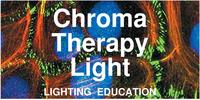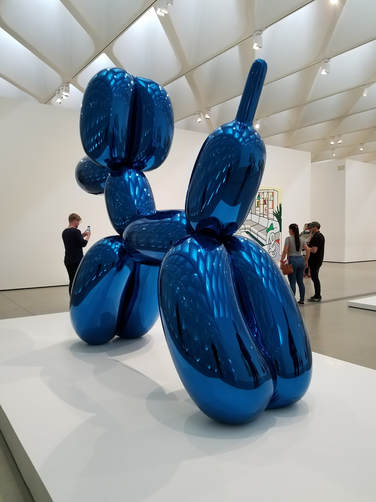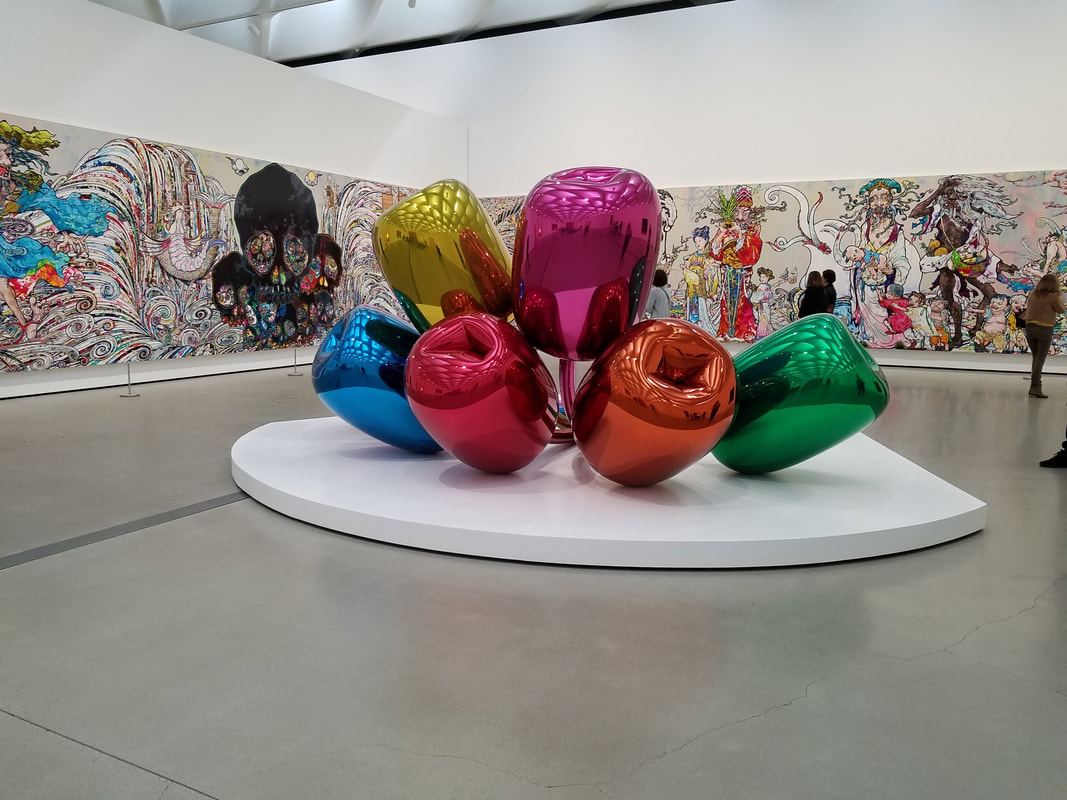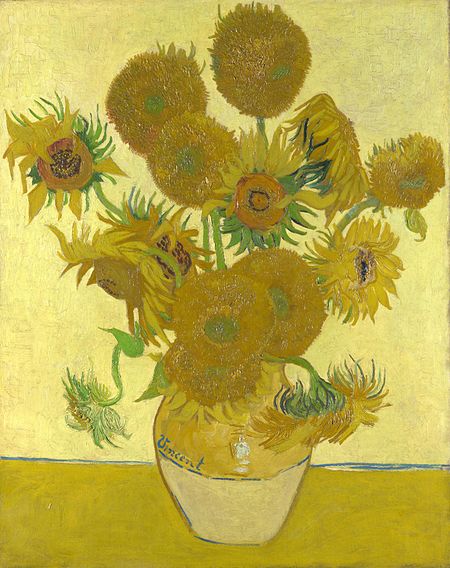Lighting for Museums - Learning Objectives
Museum Lighting
When lighting museums we need to consider both the visitors and the collections.
Guests to your museum are there to observe, learn, and enjoy the displays. It is critical to reduce:
Good museum lighting protects the collection and the visitors from unwanted glare. When selecting lighting sources for works of art, keep in mind, "You cannot see a color unless the wavelength is present in the light source." We are used to seeing colors in daylight and this is the ultimate light source; however, many museum environments are in basements or other windowless environments. Other galleries include daylight, less bright on cloudy days, and sometimes visitors attend events offered after dark. The bewildering array of light sources and lighting fixture choices is confusing. Understanding how colors appear under different light sources, CRI, CCT, and other metrics for color rendering, and controlling glare are all important lighting challenges. [1] Museum Lighting Challenges - Protecting the Collection
The best design manages the presentation of daylight and electric lighting, so that illuminance levels, spectrum, and time are combined to minimize damage while providing good viewing conditions for the visitor. [1]
Lighting can produce heat, affect humidity, and can fade or shift colors. Many collections include materials considered vulnerable to degradation. Organic materials, such as wood and baskets, are sensitive to humidity and temperature fluctuations. Textiles are subject to fading and color shift of both natural and synthetic dyes. Paints and inks can crack, fade, and shift their color over time.
There are two factors in measuring museum lighting; intensity of the light and duration of exposure. Limit light exposure by installing occupancy sensors to turn off lights when galleries are empty. Include nighttime security lighting's contribution to total light exposure. Accepted practice changes over time, in 2016 the following recommendations were popular, keeping in mind that no light is the best for conservation of art, and exposure time is a critical component. For known or suspected light-sensitive materials 50 lux (4.65 fc), for paintings 150 lux (14 fc), and for work considered stable to light 300 lux (28 fc). Limit UV to 47 microwatts per lumen or lower. LEDs in Museum Lighting
The way that buildings are designed, constructed and maintained impacts the way we experience the museum collection.
Light Testing MethodsGetty Conservation Institute is a leader in art preservation research. Some of the specialized equipment is used for determining light sensitivity is described in this You Tube video. Getty Science Up Close - Vincent Beltran, 2022.
Micro fading tester with spectrometer. |
The Getty on Museum Lighting
James Druzik and Stefan Michalski, Guidelines for Selecting Solid-State Lighting for Museums (Los Angeles: Canadian Conservation Institute/Getty Conservation Institute, 2012) http://www.connectingtocollections.org/wp-content/uploads/2011/08/SSL-Guidelines-Ver.-10.0.pdf (accessed 9 November 2016)
GATEWAY Report The report on the Getty Villa case study prepared for the U.S. Department of Energy's solid-state lighting GATEWAY demonstration project summarizes some of the research findings on LED replacement lamps from the GCI. Compared to earlier generation LED products, current warm white (2700–3000K) LEDs deliver less of a spike in the short-wavelength (blue) region, resulting in filtered halogen and LED light sources performing similarly in fading tests. On some materials, the LEDs may have slight conservation benefits compared to filtered halogen, but it would take decades for these benefits to become evident. LED light sources are one tool that curators and designers can use to achieve the preservation targets for objects of art. http://www.getty.edu/conservation/our_projects/science/lighting/case.html Van Gouh Fading
Lewis Smith, ‘Will We Have to Look at Sunflowers in the Dark? Scientists Discover Museum Lights Are Damaging Valuable Masterpieces by Van Gogh and Cézanne, Mail Online, January 7, 2013, http://www.dailymail.co.uk/sciencetech/article-2258344/Scientists-discover-LED-lights-damaging-valuable-masterpieces-artists-including-Van-Gogh-C-zanne.html (accessed 9 November 2016).
cf. Letizia Monico et al., ‘Degradation Process of Lead Chromate in Paintings by Vincent van Gogh Studied by Means of Synchrotron X-Ray Spectromicroscopy and Related Methods. 1. Artificially Aged Model Samples’, Analytical Chemistry 83, no. 4 (February 15, 2011): 1214–23 and Manuela Lunz et al., ‘Can LEDs Help with Art Conservation? – Impact of Different Light Spectra on Paint Pigment Degradation’, Studies in Conservation, http://www.tandfonline.com/doi/full/10.1080/00393630.2016.1189997. Museum Lighting Standards
Articles about UV Damage Sirri Aydinli et al., ‘On the Deterioration of Exhibited Museum Objects by Optical Radiation,’ CIE Technical Collection (Bern: Commission Internationale de l’Eclairage 1990). CIE 157:2004 Control of Damage to Museum Objects by Optical Radiation (Bern: Commission Internationale de l’Eclairage 2004 http://www.cie.co.at/index.php?i_ca_id=433). Herb Stovel, ‘Origins and Influence of the Nara Document on Authenticity,’ Association for Preservation Technology (APT) Bulletin 39, no. 2/3 (2008): 9–17 http://is.muni.cz/el/1423/podzim2013/SOC310/crd/jar/aut/Stovel-Nara-Document-on-Authenticity-APT-2008.pdf (accessed November 9 2016). Michael P. Royer, ‘Tuning Optical Radiation for Visual and Nonvisual Impact’ (PhD, The Pennsylvania State University, 2011), http://search.proquest.com/docview/888520435/ (accessed 9 November 2016). 2012 N. Miller and S. Rosenfeld, Demonstration of LED Retrofit Lamps at the Smithsonian American Art Museum, Washington, DC.http://www.pnnl.gov/main/publications/external/technical_reports/PNNL-21476.pdf Perrin, Druzik, and Miller, SSL Adoption by Museums: Survey Results, Analysis, and Recommendations. https://en.wikipedia.org/w/index.php?title=Luminosity_function&oldid=740914386 2004 Control of Damage to Museum Objects by Optical Radiation. http://www.cie.co.at/index.php?i_ca_id=433 Part One - Scientific Part Two - Museum Environment Part Three - Recommendations Museum Conservation Societies
The American Institute for Conservation of Historic & Artistic Works (AIC) - www.conservation-us.org/
The Institute of Conservation - icon.org.uk/ American Alliance of Museums - aam-us.org/ Footnotes
Photo Credits
|
- Home
-
- CHROMA Topics
- Color Spectrum - Light is Energy
- Color in Light
- Color in Nature
- Color in Paint
- Why does paint fade?
- Color Names & Meanings
- Color Phenomena
- Color Perception is Individual
- Color In Fashion
- Color for your home
- Color in Space
- Color Blindness
- Color Blind Interview
- Synesthesia
- Synesthete Deborah Borrowdale-Cox
- Synesthete Stephen Orr, BH&G Editor
-
- Circadian & THERAPY Topics
- Circadian Explained
- Circadian Ganglion Cells
- Circadian Melatonin
- Circadian Animals
- Circadian Research
- Autism & Lighting for the Spectrum
- Blue Light Dimming Apps
- Red Night Lights
- Vitamin D & Light
- SAD - Seasonal Affective Disorder
- Alzheimers and Light Therapy
- Photosensitivity - Light Sensitive Drugs
- Red Light Therapy
- Sleep & Lighting
- Dreams and Second Sleep
- NASA - Lighting in Space & Undersea
- Jet Lag
- Sunglasses
- Chakras
- Crystals, Minerals, & Gemstones
-
- LIGHTing Design Topics
- UV Germicidal Disinfection Light
- LED Lighting Facts Card
- CRI - Color Rendering Index
- LED TM-30
- LED Kelvin Color
- LED LPW
- LED Flicker
- LED Glare
- OLED - Organic LED
- Human Centric Lighting
- Lighting with Daylighting
- Lighting for Healthy Buildings & Zero Net Energy
- Lighting for Healthcare
- Lighting for Horticulture
- Lighting for Hospitality & LED Retrofits
- Lighting for Museums
- Lighting for Seniors & Low Vision
- Lighting Design Tips & Codes
- Parking Lot Lighting
- Solar Lighting for Humanity & World Health
- Davis Insectary Garden
- Santa Barbara Mesa Insectary Garden
- Home
-
- CHROMA Topics
- Color Spectrum - Light is Energy
- Color in Light
- Color in Nature
- Color in Paint
- Why does paint fade?
- Color Names & Meanings
- Color Phenomena
- Color Perception is Individual
- Color In Fashion
- Color for your home
- Color in Space
- Color Blindness
- Color Blind Interview
- Synesthesia
- Synesthete Deborah Borrowdale-Cox
- Synesthete Stephen Orr, BH&G Editor
-
- Circadian & THERAPY Topics
- Circadian Explained
- Circadian Ganglion Cells
- Circadian Melatonin
- Circadian Animals
- Circadian Research
- Autism & Lighting for the Spectrum
- Blue Light Dimming Apps
- Red Night Lights
- Vitamin D & Light
- SAD - Seasonal Affective Disorder
- Alzheimers and Light Therapy
- Photosensitivity - Light Sensitive Drugs
- Red Light Therapy
- Sleep & Lighting
- Dreams and Second Sleep
- NASA - Lighting in Space & Undersea
- Jet Lag
- Sunglasses
- Chakras
- Crystals, Minerals, & Gemstones
-
- LIGHTing Design Topics
- UV Germicidal Disinfection Light
- LED Lighting Facts Card
- CRI - Color Rendering Index
- LED TM-30
- LED Kelvin Color
- LED LPW
- LED Flicker
- LED Glare
- OLED - Organic LED
- Human Centric Lighting
- Lighting with Daylighting
- Lighting for Healthy Buildings & Zero Net Energy
- Lighting for Healthcare
- Lighting for Horticulture
- Lighting for Hospitality & LED Retrofits
- Lighting for Museums
- Lighting for Seniors & Low Vision
- Lighting Design Tips & Codes
- Parking Lot Lighting
- Solar Lighting for Humanity & World Health
- Davis Insectary Garden
- Santa Barbara Mesa Insectary Garden








